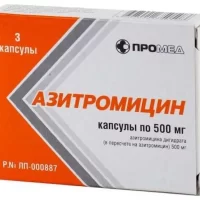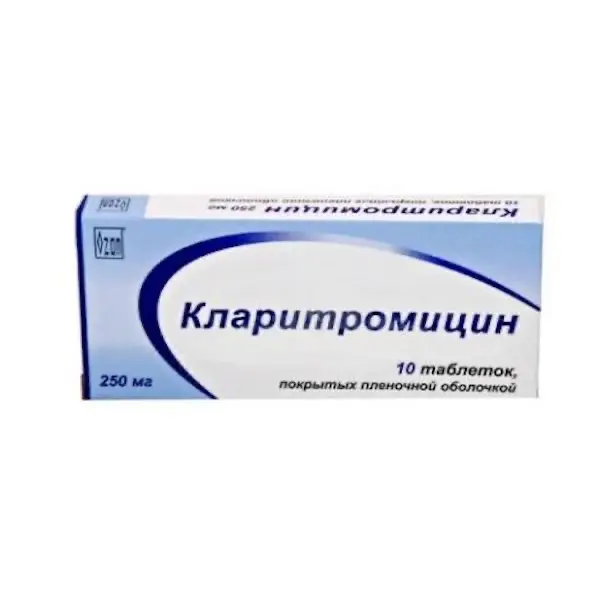Description
Amoxicillin EXPRESS Pharmacodynamics
Mechanism of action
Amoxicillin is a semisynthetic penicillin (a beta-lactam antibiotic) that inhibits one or more enzymes (known as penicillin-binding proteins – PBPs) that play a role in peptidoglycan biosynthesis. Peptidoglycan is a structural element of the bacterial cell wall. Inhibition of peptidoglycan synthesis leads to weakening of the cell wall, which is usually followed by lysis and death of the bacterial cell.
Amoxicillin is degraded by beta-lactamases that can be produced by some bacteria, making them resistant to amoxicillin. Thus, the spectrum of activity of unprotected amoxicillin does not include microorganisms producing these enzymes.
Pharmacokinetics/ pharmacodynamics
Time beyond the minimum suppressive concentration (T > IPC) is considered a major determinant of the efficacy of amoxicillin.
Mechanisms of resistance
The main mechanisms of resistance to amoxicillin are:
– Enzymatic inactivation by beta-lactamases;
– mutation of BPS, resulting in a decrease in the affinity of the antibiotic for the target.
Impermeability of the bacterial cell wall or active excretion of the antibiotic from the cell (efflux) can cause or contribute to bacterial resistance in Gram-negative bacteria.
The prevalence of resistance may vary by geographic location and over time for certain species. It is advisable to focus on local information about resistance, especially when treating severe infections. If necessary, qualified advice should be sought if the local prevalence is such that the efficacy of the drug in treating specific types of infections is questionable.
Borderline IPC values
Borderline Minimum Inhibitory Concentrations (MIC) values for amoxicillin according to European Committee for Antibiotic Susceptibility Testing (EUCAST) criteria, version 5.0:
Microorganisms Borderline IPC value (mg/L)
Sensitive ≤Resistant >
Enterobacteriaceae 81 8
Staphylococcus spp. note2 note2
Enterobacteriaceae spp.3 4 8
Streptococci of groups A, B, C, and G notation4 notation4
Streptococcus ppeitoniae note5 note5
Streptococci Viridans 0,5 2
Haemophilus influenzae 26 26
Moraxella catarrhalis note7 note7
Neisseria meningitidis 0.125 1
Gram-positive anaerobes excluding Clostridium difficile8 4 8
Gram-negative anaerobes8 0.5 2
Helicobacter pylori 0.1259 0.1259
Proteinella tyltocida 1 1
Non-specific borderline strains10 2 8
1 Wild-type strains of Enterobacteriaceae are classified as aminopenicillin-sensitive. In some countries, wild-type E. coli and P. mirabilis isolates are classified as moderately resistant. In this case, a borderline IPC value of S≤0.5 mg/L is used.
2 Most staphylococci produce penicillinases and are resistant to amoxicillin. Methicillin-resistant strains of staphylococci, with few exceptions, are resistant to all beta-lactam antibiotics.
3 Amoxicillin sensitivity is assessed by ampicillin.
4 Sensitivity of group A, B, C, and G streptococci to penicillins is evaluated based on their sensitivity to benzylpenicillin.
5 Borderline values refer to isolates isolated in all types of infection except meningitis. If an isolate is evaluated as moderately resistant to ampicillin, oral amoxicillin should not be administered. Sensitivity is assessed by the MPC of ampicillin.
6 Borderline values are based on intravenous administration. Beta-lactamase-producing strains are classified as resistant.
7 Microorganisms that produce beta-lactamases are classified as resistant.
8 Amoxicillin sensitivity is assessed by benzylpenicillin sensitivity.
9 Boundary values are set at the epidemiologic cut-off point (ECOFF) value, which distinguishes wild-type isolates from those with reduced sensitivity.
10 Nonviscosity boundary values are based on doses of 0.5 g 3 or 4 times daily (1.5 to 2 g/day).
Sensitivity of microorganisms to amoxicillin in vitro
Common susceptible microorganisms
Gram-positive aerobes:
Eptegococcis faecalis.
Beta-haemolytic streptococci (groups A, B, C and G)
Listeria tonocytogenes
Microorganisms that may have acquired resistance mechanisms to amoxicillin
Gram-negative aerobes :
Escherichia coli
Helicobacter influenzae
Helicobacter pylori
Proteis Тіrabіllіѕ
Altonella typhi
Saltonella paratyphi
Posterella tyltocida
Gram-positive aerobes Staphylococcus aureus Coagulase-negative
Staerthococcus ppeitoniae
Staphylococcus viridans group
Gram-positive aerobes:
clostridiitt spp.
Gram-negative aerobes:
Fusobacteriit spp.
Indications
Infections caused by microorganisms sensitive to the drug, including:
– acute bacterial sinusitis;
– Acute otitis media;
– Acute streptococcal tonsillitis and pharyngitis;
– exacerbation of chronic bronchitis;
– community-acquired pneumonia;
– acute cystitis;
– Asymptomatic bacteriuria during pregnancy;
– Acute pyelonephritis;
– typhoid and paratyphoid fever;
– Dental abscess with subcutaneous tissue inflammation;
– Prosthetic joint infections;
– Lyme disease;
– prevention of bacterial endocarditis during surgical procedures in the oral cavity and upper respiratory tract.
In combination with other drugs, according to eradication regimens, is used to treat digestive tract diseases associated with Helicobacter pylori.
When choosing an antibiotic, official clinical guidelines for antibiotic therapy should be taken into account.
Contraindications
Hypersensitivity to amoxicillin, other penicillins or any other component of the drug.
A history of severe immediate-type hypersensitivity reactions (e.g., anaphylaxis) to another beta-lactam antibiotic (e.g., cephalosporin, carbapenem or monobactam).
With caution
Allergic reactions (including bronchial asthma, polliposis, hypersensitivity to acetylsalicylic acid) in history, gastrointestinal diseases in history (especially colitis associated with antibiotic use), renal failure, infectious mononucleosis, lympholeukosis, pregnancy, breastfeeding, prematurity, advanced age.
Administration during pregnancy and lactation
Pregnancy
Results from animal studies have shown no direct or indirect harmful effects with respect to reproductive toxicity. Limited data on the use of amoxicillin during pregnancy in humans indicate no increased risk of congenital malformations. Amoxicillin may be used during pregnancy if the potential benefit to the mother exceeds the potential risk to the fetus.
Breastfeeding period
Amoxicillin is excreted into the breast milk in small amounts, if necessary, the drug may be used during breastfeeding. A baby who is being breastfed may develop diarrhea, sensitization and fungal infection of the mucous membranes, so it may be necessary to stop breastfeeding. Amoxicillin should be used during breastfeeding only after evaluation by the attending physician of the benefit/risk ratio.
Dosage and administration method
- Amoxicillin EXPRESS is used orally, regardless of meals.
Immediately before use the tablet should be dissolved in water (not less than 50 ml) and mixed thoroughly. The resulting mixture, which has a slight fruity taste, should be taken immediately after preparation. - Doses
When choosing a dose of Amoxicillin EXPRESS for the treatment of certain infections, the following factors should be taken into account:
– The suspected pathogens and their likely sensitivity to the antibacterial
drugs;
– severity and localization of the infection;
– age, body weight, and renal function of the patient, as described below.
The duration of treatment depends on the type of infection and the clinical response of the patient and should be as short as possible. Some infections are subject to longer treatment duration. - Adults and children ≥ 40 kg
Indication * Dosage
Acute bacterial sinusitis 250 mg to 500 mg every 8 hours or
750 mg -1 g every 12 hours
For severe infections 750 mg – 1 g every 8 hours
For treatment of acute cystitis, 3 g twice daily may be taken
Asymptomatic bacteriuria during pregnancy
Acute pyelonephritis
Dental abscess with subcutaneous inflammation - Acute cystitis
Acute otitis media 500 mg every 8 hours or 750 mg -1 g every 12 hours
For severe infections 750 mg -1 g every 8 hours for 10 days
Acute streptococcal tonsillitis and pharyngitis
Acute chronic bronchitis
Community-acquired pneumonia 500 mg – 1 g every 8 hours
Typhoid and paratyphoid fever 500 mg – 2 g every 8 hours - Prosthetic joint infections
500 mg – 1 g every 8 hours
Prophylaxis of bacterial endocarditis during oral and upper respiratory surgical procedures 2 g orally, single dose 30-60 minutes before oral and upper respiratory surgical procedure
Helicobacter pylori eradication 750 mg – 1 g twice daily in combination with a proton pump inhibitor (e.g., omeprazole) and another antibiotic (e.g., clarithromycin, metronidazole) for 7 days - Lyme disease Early stage: 500 mg – 1 g every 8 hours, up to a maximum daily dose of 4 g divided into several doses over 14 days (10 to 21 days).
Late stage (systemic infection): 500 mg-2 g every 8 hours, maximum daily dose 6 g divided into several doses, for 10-30 days
*Refer to the official clinical guidelines for each indication. - Children with a body weight ≥40 kg
Children over 40 kg should take the dose recommended for adults.
Children with a body weight < 40 kg:
Indication * Dose*.
Acute bacterial sinusitis 20-90 mg/kg/day divided into 2-3 doses**
Acute otitis media
Community-acquired pneumonia
Acute cystitis
Acute pyelonephritis
Dental abscess with subcutaneous tissue inflammation
Acute streptococcal tonsillitis and pharyngitis 40-90 mg/kg/day divided into 2-3 doses**
Typhoid and paratyphoid fever 100 mg/kg/day divided into 3 doses
Prevention of bacterial endocarditis during oral and upper respiratory surgical procedures 50 mg/kg orally, single dose 30-60 minutes before oral and upper respiratory surgical procedure - Lyme disease Early stage: 25-50 mg/kg/day, divided into 3 doses, for 10-21 days.
Late stage (systemic infection): 100 mg/kg/day divided into 3 doses, for 10 to 30 days
* Official guidelines for each indication should be considered.
** Only when amoxicillin is prescribed in the upper dose range should twice-daily dosing be considered.
Dosing regimen in certain categories of patients
Patients of elderly age. - Dosage adjustment is not required.
Patients with renal insufficiency
Glomerular filtration rate (ml/min) Adults and children ≥ 40 kg Children < 40 kg*
More than 30 No need for adjustment No need for adjustment
10-30 Maximum 500 mg twice daily 15 mg/kg twice daily (maximum 500 mg twice daily)
Less than 10 Maximum 500 mg per day 15 mg/kg once daily (max. 500 mg per day)
*Parenteral treatment is preferred in most cases.
Patients receiving hemodialysis
Amoxicillin can be excreted from the blood during hemodialysis.
Hemodialysis - Adults and children ≥40 kg 15 mg/kg/day once daily
One additional dose at a rate of 15 mg/kg is required before hemodialysis. To restore the level of drug circulation after hemodialysis, an additional dose at a rate of 15 mg/kg should be administered.
Patients receiving peritoneal dialysis
The maximum dose of amoxicillin is 500 mg per day.
Patients with liver dysfunction
Caution should be exercised and liver function should be monitored regularly.





